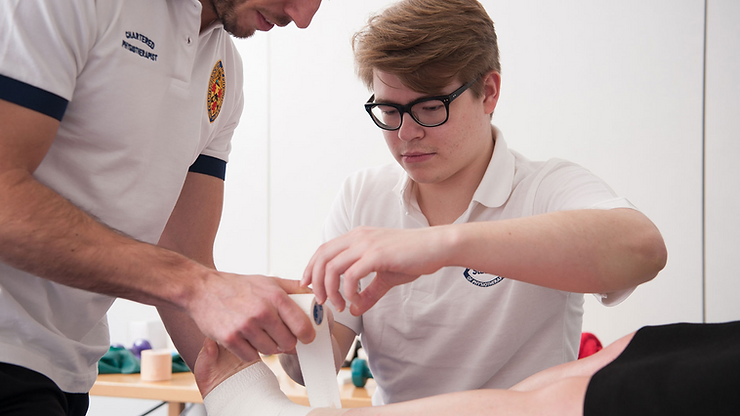How to prepare for placement

Preparing for clinical placement can be understandably daunting for many students, so we want to give you practically useful tips to make your preparation that much easier.
Email your placement supervisor
The earlier you can contact your placement supervisor the better. Take a look at the summary below which will be incredibly useful in your preparation for your placement which includes:
- Understanding what your placement involves
- Your work rota and shift patterns you will be expected to do throughout the placement
- What you may need to bring on your first day
It is advisable to contact your placement supervisor as soon as possible, ideally, 2 weeks before starting the placement. I understand some placements are arranged on short notice which can be frustrating when trying to prepare, nevertheless, sending an email to enquire for more information is professional and will get you off to a good start with your placement supervisor.
What do you want to achieve from the placement?
This is something I wish I spent more time on before beginning a placement. Initially, I naively thought this was another tick box exercise as part of the placement. However, the beauty of physiotherapy placements is that you can set your objectives and goals you are keen to achieve at the end of placement (and adjust them accordingly during the placement). I would highly recommend carefully thinking about what you would like to achieve before putting pen to paper. Here are some examples of goals I have written in the past:
- Shadow the Speech and Language Therapist assessing and treating patients for half a day and understanding their role within the MDT
- By the end of the placement, I will be able to complete a patient subjective history
- By the end of the placement, I will be able to confidently conduct a physical examination with no assistance from my supervisor
- By the end of the placement, I will be able to confidently create a problem list following a subjective history and physical examination of a patient
- By the end of the placement, I will be able to have a basic understanding of X, Y, Z conditions and the best evidence-based treatment for these
Go over the basics
It is incredibly useful to go over basic anatomy and physiology that is relevant to your placement speciality. For clarity, anatomy refers to understanding the structures of the human body and where they are located. Physiology refers to how the body structure works, including basic body functions, from how molecules work in cells to how organs work together in systems. e.g. the normal structure and function of the lungs. This helps you to understand how a healthy body works and allows you to work out what process or structure may be abnormal in a disease state – all of which is crucial for your clinical reasoning.
Let’s say you are about to begin a respiratory placement; it will be extremely beneficial to have a strong foundation of the respiratory system. This can be done by understanding the flow of oxygen through the respiratory system from the outside environment to the lungs, how oxygen is transported through the body in exchange for carbon dioxide as well as the importance of oxygen in the normal function of different bodily systems.
Building these foundational skills from the ground up and understanding the structure and role of different parts of the respiratory system will allow you to appreciate what structure can be affected when a patient is suffering from a respiratory condition. This will allow you to connect all the dots from understanding how this can affect a patient when taking a history, to spotting signs in an examination, and appreciate how treatments can help resolve the issue.
Practise your subjective history and physical examination technique
Practise how to take a patient subjective history using the Calgary Cambridge modal. It is a great template for you to use and gather a holistic understanding of the patient. Practice with your peers, colleagues on placement or even ask your placement supervisor!
It’s also important to ask for feedback and work on this. Don’t be afraid to practise and the more you practise the more confident you will be! Similarly, with physical examinations, practise these with peers, colleagues, and with family & friends. Ensure you are confident with your technique, from having a general inspection of the patient from the end of the bed/plinth to examining different parts of the patient’s body, e.g. assessing a patient’s lower limb reflexes. The more hands-on practise you do the more it will become second nature to you at the start of the placement, giving you the confidence to examine patients and instil trust in your supervisor that you are safe and competent, ultimately allowing you to ace your placement.
References
Cambridge-Calgary model: Main, Chris J et al. “Addressing patient beliefs and expectations in the consultation.” Best practice & research. Clinical rheumatology vol. 24,2 (2010): 219-25.




Share Post